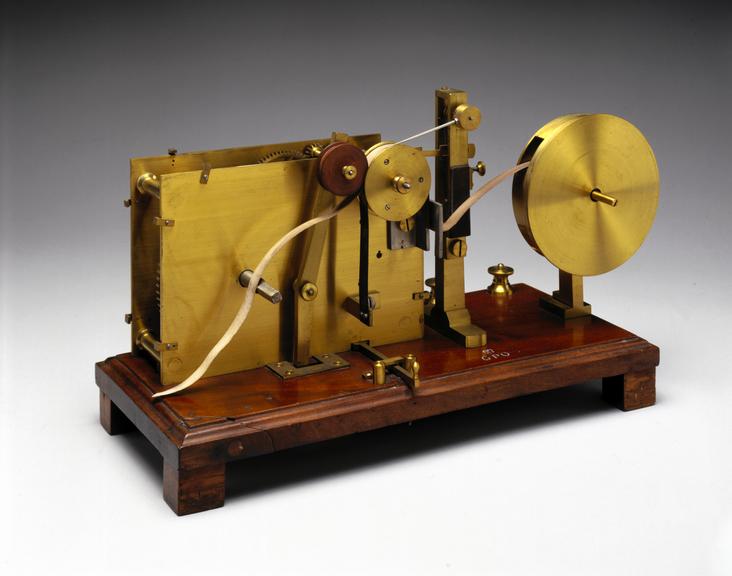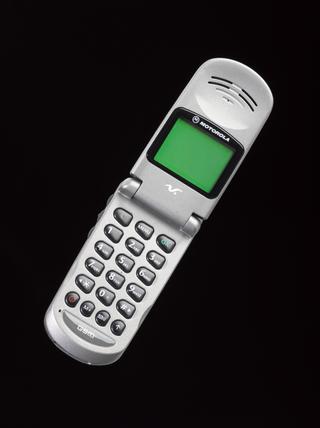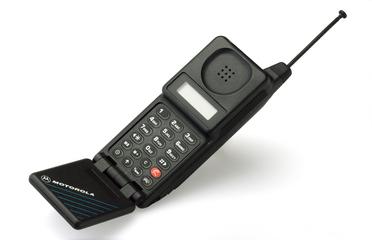
Bain's chemical telegraph, 1850.
- inventor:
- Alexander Bain






Alexander Bain's chemical telegraph, unknown maker, England, 1850. Includes key not shown on photograph.
Alexander Bain's chemical telegraph, unknown maker, England, 1850.
This instrument was used by the Electric Telegraph Company for a while instead of a needle type receiver. Messages were prepared by perforating a paper strip, or slip. The code used was similar to Morse. The slip was then fed through the transmitting instrument by clockwork. When the spring mechanism inside the instrument detected a perforated hole, it completed an electrical connection, which would be transmitted to the receiving instrument. The receiver comprised a roll of dampened and chemically treated paper slip driven by clockwork beneath a steel 'style' connected to the line wire. Each electric pulse left a mark on the dampened strip, due to the chemicals it had been treated with. Thus a code could be used to transmit messages. Alexander Bain was the originator of perforated paper tape used for telegraph purposes.
Details
- Category:
- Telecommunications
- Object Number:
- 1888-198
- Materials:
- wood (unidentified), steel (metal), brass (copper, zinc alloy) and paper (fibre product)
- Measurements:
-
overall: 235 mm x 400 mm x 180 mm, 6.37 kg
- type:
- telegraph
- credit:
- Donated by H.M. Postmaster General




